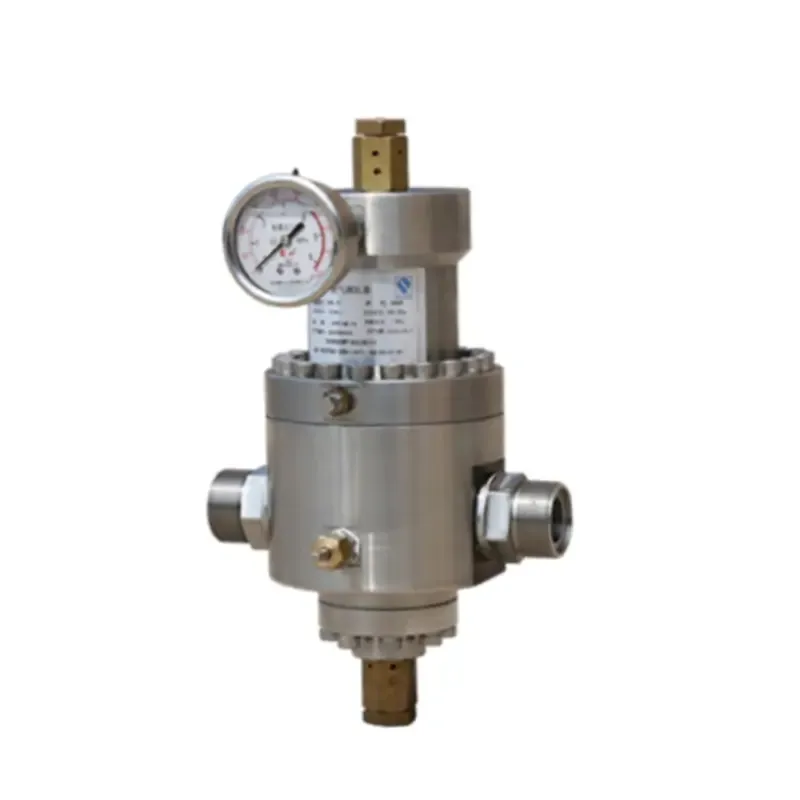
Nov . 07, 2024 08:01
Back to list
Understanding Pressure Regulators and Their Applications in Fluid Systems
Understanding Pressure Reducing Valves Function and Importance
Pressure reducing valves (PRVs) are essential components found in various fluid systems, mainly in water distribution and industrial applications. Their primary function is to manage and reduce the pressure of fluids, ensuring that downstream systems operate efficiently and safely. This article elaborates on how PRVs work, their benefits, and their importance in various industries.
What is a Pressure Reducing Valve?
A pressure reducing valve is a mechanical device that automatically reduces the pressure of a fluid to a preset level. It operates by utilizing a diaphragm or piston design, which responds to the downstream pressure. When the downstream pressure exceeds the desired setting, the valve closes partially to decrease the input pressure, and when it falls below the setting, the valve opens to allow more fluid flow.
This process ensures that systems receive a consistent pressure, which is crucial for various operations, such as irrigation, heating, and manufacturing processes. PRVs are typically found in both residential and industrial settings, ensuring that water and other fluids are delivered at safe and effective pressure levels.
How Does a Pressure Reducing Valve Work?
The operation of a PRV involves several key components, including the inlet pressure, outlet pressure, and the valve mechanism itself. When a fluid enters the valve, the pressure is compared to a spring-loaded adjustable setting. If the inlet pressure exceeds this setting, the valve closes slightly to reduce the flow, thus lowering the downstream pressure. Conversely, if the pressure drops below the preset point, the valve opens to allow more fluid to flow through.
This delicate balance maintained by the PRV is crucial for preventing damage to pipes, fittings, and downstream equipment, which can occur if pressure levels are too high.
.
1. Protection of Infrastructure One of the primary benefits of a PRV is its ability to safeguard plumbing systems and equipment from damage. Excessive pressure can lead to pipe bursts, leaks, and system failures, resulting in costly repairs and downtime.
مخفض الضغط

2. Water Conservation In water distribution systems, PRVs help manage pressure effectively, reducing water wastage due to leaks that occur from high-pressure situations. This conservation is increasingly vital as communities strive to employ sustainable water management practices.
3. Energy Efficiency By maintaining optimal pressure, PRVs contribute to overall energy savings. High pressure can increase the energy consumption of pumps and other equipment, whereas reducing pressure to necessary levels can lower operating costs.
4. Improved System Performance Systems designed to operate at specific pressures function more effectively when PRVs are in place. This optimization can lead to enhanced performance and longevity of devices, from heating systems to irrigation setups.
Applications in Various Industries
PRVs are not limited to residential plumbing; they play a significant role in numerous industries
- Agriculture In irrigation systems, PRVs ensure proper water distribution, allowing for efficient water usage while preventing overpressure that could damage irrigation equipment. - Manufacturing In manufacturing processes, precise pressure control is essential for quality control. PRVs help maintain the required pressure for the operation of various machines.
- HVAC Systems Heating, ventilation, and air conditioning (HVAC) systems rely on PRVs to maintain consistent pressure for optimal performance and comfort.
Conclusion
Pressure reducing valves are crucial devices that facilitate the safe and efficient operation of fluid systems across various industries. Their ability to manage pressure not only protects infrastructure but also contributes to energy savings and improved system performance. As industries continue to seek sustainable practices and efficient operations, the importance of PRVs will only grow, underscoring their role in modern engineering and maintenance. Understanding these valves and their functionalities is essential for anyone involved in system design, maintenance, or operation.
Latest news
-
Safety Valve Spring-Loaded Design Overpressure ProtectionNewsJul.25,2025
-
Precision Voltage Regulator AC5 Accuracy Grade PerformanceNewsJul.25,2025
-
Natural Gas Pressure Regulating Skid Industrial Pipeline ApplicationsNewsJul.25,2025
-
Natural Gas Filter Stainless Steel Mesh Element DesignNewsJul.25,2025
-
Gas Pressure Regulator Valve Direct-Acting Spring-Loaded DesignNewsJul.25,2025
-
Decompression Equipment Multi-Stage Heat Exchange System DesignNewsJul.25,2025

